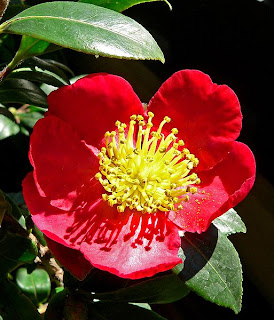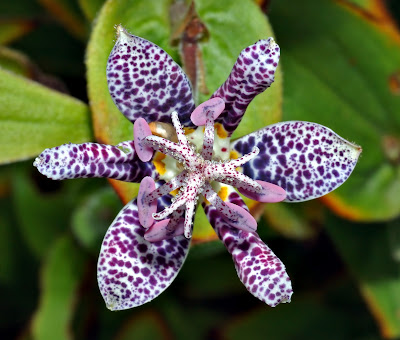Tis the season for giving and what better gift to give than a plant or garden feature. Trees will provide years of enjoyment, but also have the added benefit of increasing the recipient's property value. Trees can also make a beautiful memorial to loved ones who have passed away. The first Christmas after a death can be a sensitive and difficult time and sometimes a living gift can offer comfort.
Not sure what to give? Give a gift certificate so that the recipient can choose the perfect plant for their chosen location. Our staff of qualified gardeners will be happy to assist them in making the best choice and offer advice on how to install their gift.
This month's featured items
Coral Bark Japanese Maple
Acer palmatum 'Sango Kaku'
The Japanese maple cultivar 'Sango Kaku', often referred to as Coral bark maple, is generally one of the most prized of all of the upright palmate types for its winter interest. The bark on new twigs turns bright coral red (almost fluorescent) after the leaves fall. A vigorous upright cultivar that may attain a landscape size of 25’tall and 20’ wide. Leaves emerge in April and display a pleasing yellow-green with plum to red edging. As the young leaves expand they soon age to light green for the rest of spring and then take on autumn-like hues of red and orange beginning in early summer. Older trees form vase shaped canopies. The intense coral bark color is reduced as the trunk and stems enlarge. Does best in partial sun, it prefers moist well drained soil but tolerates a range of soil types including sand and heavy clay. Highly suited to smaller yards due to its limited width at maturity.
Acer palmatum 'Sango Kaku'
The Japanese maple cultivar 'Sango Kaku', often referred to as Coral bark maple, is generally one of the most prized of all of the upright palmate types for its winter interest. The bark on new twigs turns bright coral red (almost fluorescent) after the leaves fall. A vigorous upright cultivar that may attain a landscape size of 25’tall and 20’ wide. Leaves emerge in April and display a pleasing yellow-green with plum to red edging. As the young leaves expand they soon age to light green for the rest of spring and then take on autumn-like hues of red and orange beginning in early summer. Older trees form vase shaped canopies. The intense coral bark color is reduced as the trunk and stems enlarge. Does best in partial sun, it prefers moist well drained soil but tolerates a range of soil types including sand and heavy clay. Highly suited to smaller yards due to its limited width at maturity.
Yuletide Camellia
Camellia sasanqua 'Yuletide'
Yuletide Camellia blooms during the winter, when all else seems dead. It is a bright and shining spot of color in an otherwise bleak environment. Single, brilliant, fiery red blooms centered with bright yellow stamens makes this a beautiful addition to the winter garden. Blossoms stand out in high contrast against glossy, dark green.
Just because your herb garden, outside, is dormant, that doesn't mean you can't enjoy the healthful and tasty benefits of fresh herbs in your food. We have attractive herb baskets that would make a wonderful gift for the gourmand in your life.
Leatherleaf Mahonia
Mahonia bealei
A stiff & prickly shrub make this a good choice for a barrier or security planting. It blooms in winter with cheerful, fragrant, yellow flowers and carries slate blue berries through the season.
4’- 8’ T x 4’- 6’ W partial shade
Black Bamboo
Phyllostachys nigra
With jet black culms and feathery green leaves, this very sought-after bamboo. Under ideal conditions Black Bamboo will grow to 40 feet in height with culms over 2 inches in diameter, but 25 feet is its average height in most climates. New culms emerge green every spring and gradually turn black in one to three years. There is always a contrast of light and dark culms balanced by slender, dark green leaves. This bamboo is initially slow to spread, through when mature, it can be quite vigorous. P. nigra should be given a generous layer of rich topsoil, composed of compost or aged manure and mulch, and space to grow unimpeded. It makes an outstanding specimen, if well cared for, and can be the focal point of any garden. It can also be shaped to form a dense hedge for privacy.
Zone 7-10
Expected Height: 20 to 35 feet
Diameter: 2.25 inches
Hardiness: 5° F
Diameter: 2.25 inches
Hardiness: 5° F
Oriental Paper Bush
Edgeworthia chrysantha .
This unusual plant has umbrella-like leaves but it is the unique yellow flowers aging to creamy white, that are the show. They have a delightful are fragrance and open until late winter from buds that have been obvious from late autumn.
Decorative Boulders & Stones
Add texture and visual interest to your garden by placing boulders and stone to it. Stone can lend a look of permanence and continuity to an area of your yard that changes with the seasons. Best of all, boulders don't need to be watered during the hot summer months! You can give your boulders and stones an old look by allowing moss to grow on them. Encourage growth between stone pavers by blending moss and buttermilk in your blender and then pouring the mixture between the stones. The moss will give your area an old look like it's been there for a hundred years instead of a few months.
Come visit our extensive stone yard to find the boulder, stone, or paver that is perfect for your outdoor living space.
Cast Iron Plant
Aspidistra elatior
Aptly named 'cast-iron plant' for its seeming ability to last forever in the most adverse conditions, the humble Aspidistra elatior is a staple of the shade garden. Give this as a houseplant. When the weather warms up, the recipient can transplant it outside as an attractive addition to their shade garden. The lance shaped leaves are dark green and leathery, and around 12-20 in (30-50 cm) long. They spread in clumps, vigorously but at a moderate enough rate not to be invasive or even troublesome.
Aptly named 'cast-iron plant' for its seeming ability to last forever in the most adverse conditions, the humble Aspidistra elatior is a staple of the shade garden. Give this as a houseplant. When the weather warms up, the recipient can transplant it outside as an attractive addition to their shade garden. The lance shaped leaves are dark green and leathery, and around 12-20 in (30-50 cm) long. They spread in clumps, vigorously but at a moderate enough rate not to be invasive or even troublesome.
Bottlebrush Tree
Callistimon rigidus



















